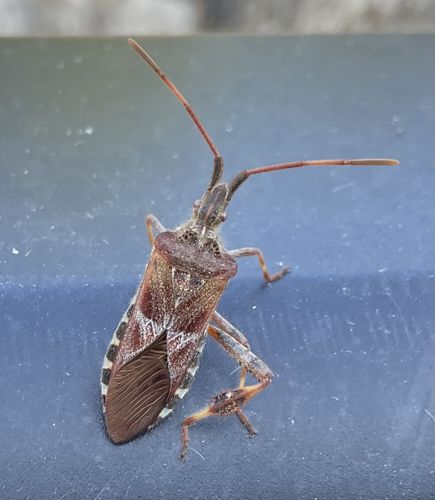Western Conifer Seed Bug
Scientific Name: Leptoglossus occidentalis
Order & Family: Hemiptera, Coreidae (leaf-footed bugs)
Size: 16-20 mm (0.63-0.79 inches) in length

Natural Habitat
Coniferous forests, urban and suburban areas near conifer trees. They often seek shelter in homes and other structures during colder months.
Diet & Feeding
Primarily feeds on the developing seeds and cones of coniferous trees, such as pines, firs, and spruces. They use their piercing-sucking mouthparts to extract sap.
Behavior Patterns
As temperatures drop in late summer and fall, Western Conifer Seed Bugs aggregate and seek overwintering sites, often entering homes and other buildings through cracks and openings. They are not considered a public health pest but can be a nuisance due to their presence and the strong odor they emit when disturbed (a defensive mechanism). They are strong flyers.
Risks & Benefits
Potential risks include being a nuisance pest when they invade homes in large numbers. While they do not bite or pose a health risk to humans or pets, their presence can be alarming, and their foul-smelling defensive fluid can be unpleasant. Agriculturally, they can be a minor pest of conifer seed crops, potentially reducing seed viability. They have no significant benefits to humans or the ecosystem.
Identified on: 9/18/2025